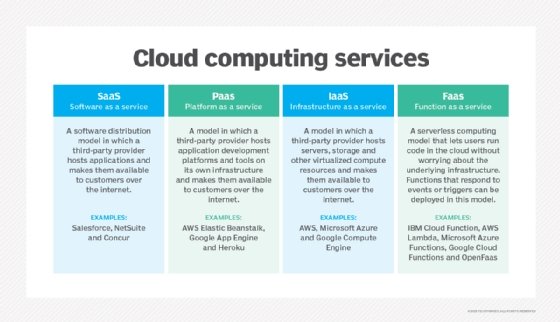Exploring Universal Cloud Service Advantages: Streamlined Solutions for All Demands
Exploring Universal Cloud Service Advantages: Streamlined Solutions for All Demands
Blog Article
Transform Your IT Facilities With Cloud Services
In today's busy business landscape, the duty of IT framework can not be taken too lightly. Embracing cloud services offers companies a myriad of advantages, from increased flexibility to boosted cooperation. Nonetheless, the journey to changing your IT facilities is not without its obstacles. As innovation remains to evolve, staying ahead of the curve and making notified decisions regarding cloud options is paramount. The essential lies in comprehending just how cloud solutions can reshape your organization's IT landscape and drive innovation.
Advantages of Cloud Services
Leveraging cloud services offers organizations a scalable and affordable solution for handling their IT facilities. One of the essential benefits of cloud solutions is the versatility they provide.

In addition, cloud solutions promote partnership and remote job by offering workers with accessibility to data and applications from anywhere with a net connection. This ease of access increases performance and enables for seamless collaboration among group participants, no matter of their physical place. Generally, the benefits of cloud solutions are substantial, making them an eye-catching alternative for companies looking to improve their IT infrastructure.

Movement Methods
To effectively shift to cloud services, companies should meticulously prepare and implement movement techniques that line up with their company goals and IT needs. The first action in this process is to conduct a complete assessment of the existing IT infrastructure to identify which data and applications can be moved to the cloud. Organizations must focus on workloads based on variables such as safety requirements, performance demands, and conformity policies.
Once the evaluation is complete, organizations can select the most appropriate movement technique. This can include rehosting, refactoring, rearchitecting, or restoring applications for the cloud atmosphere. When picking the movement technique., it's vital to consider elements like time, cost, and intricacy restrictions.
Furthermore, organizations must create a comprehensive movement strategy that outlines the timeline, sources, and obligations for every action of the movement procedure - cloud services press release. Routine screening and tracking are important to make sure a smooth transition and reduce interruptions to organization operations. By complying with these migration techniques, companies can open the full capacity of cloud solutions and drive technology within their IT facilities
Protection Considerations
Making sure robust protection steps is paramount when integrating cloud solutions into an organization's IT infrastructure. The shift to the cloud brings one-of-a-kind safety and security considerations that should be resolved to safeguard sensitive data and preserve operational honesty. One crucial element to consider is data file encryption both in transportation and at rest. Security aids safeguard details from unauthorized access, making sure that even if information is intercepted, it remains unreadable.
Additionally, applying solid access controls is essential. This involves specifying user approvals, authentication procedures, and keeping an eye on access to stop unapproved individuals from gaining entry to delicate resources. Routine safety and security audits and analyses are important to guarantee and determine vulnerabilities compliance with market laws.
In addition, companies must have a durable event feedback plan in place to promptly deal with safety breaches or data compromises. This plan ought to describe steps to consist of the case, mitigate damages, and recover regular procedures efficiently. By prioritizing safety and security factors to consider and executing positive procedures, companies can with confidence utilize cloud services while safeguarding their digital possessions.
Cost-Saving Tips
When streamlining IT infrastructure with cloud solutions, companies can enhance their spending plan through strategic cost-saving suggestions. One effective way to conserve costs is by leveraging the pay-as-you-go version supplied by several cloud service carriers - linkdaddy cloud services press release. This technique permits organizations to pay just for the sources they make use of, eliminating the need to buy expensive hardware or software program upfront. Furthermore, organizations can minimize functional prices by decreasing the demand for on-site maintenance and support team, as several cloud services use automated updates and support.
One more cost-saving tip is to very carefully change and keep track of cloud usage to stay clear of go right here unneeded expenses. By consistently examining use information and scaling sources up or down based upon demand, organizations can guarantee they are not overspending on unused ability. Moreover, thinking about hybrid or multi-cloud cloud remedies can also bring about set you back financial savings by allowing companies to pick one of the most cost-effective services for each workload.
Future Patterns
The advancement of cloud services is shaping the future landscape of IT facilities. As we look ahead, a number of key trends are poised to affect exactly how organizations take advantage of cloud services to improve their IT operations. One substantial fad is the enhancing fostering of multi-cloud more information strategies. Organizations are recognizing the advantages of distributing work across numerous cloud providers to optimize efficiency, boost strength, and alleviate risks connected with supplier lock-in.
Another popular fad is the rise of side computing together with cloud services. Side computing brings processing closer to the information resource, minimizing latency and enabling real-time information analysis. This trend is especially crucial in markets such as IoT, self-governing automobiles, and medical care, where instant decision-making is vital.
Furthermore, the integration of expert system (AI) and artificial intelligence (ML) abilities right into cloud services is set to redefine just how companies draw out understandings from their information. AI-driven automation, anticipating analytics, and personalized client experiences are simply a few of the ways AI and ML are reinventing cloud services.
Conclusion
In final thought, cloud solutions provide various advantages for companies looking to transform their IT facilities. Embracing cloud solutions can lead to an extra agile and affordable company landscape, allowing for better versatility to transforming market problems and improved collaboration among teams.

Ensuring robust protection steps is critical when incorporating cloud services into imp source a company's IT framework.In verdict, cloud solutions offer numerous benefits for companies looking to transform their IT infrastructure.
Report this page